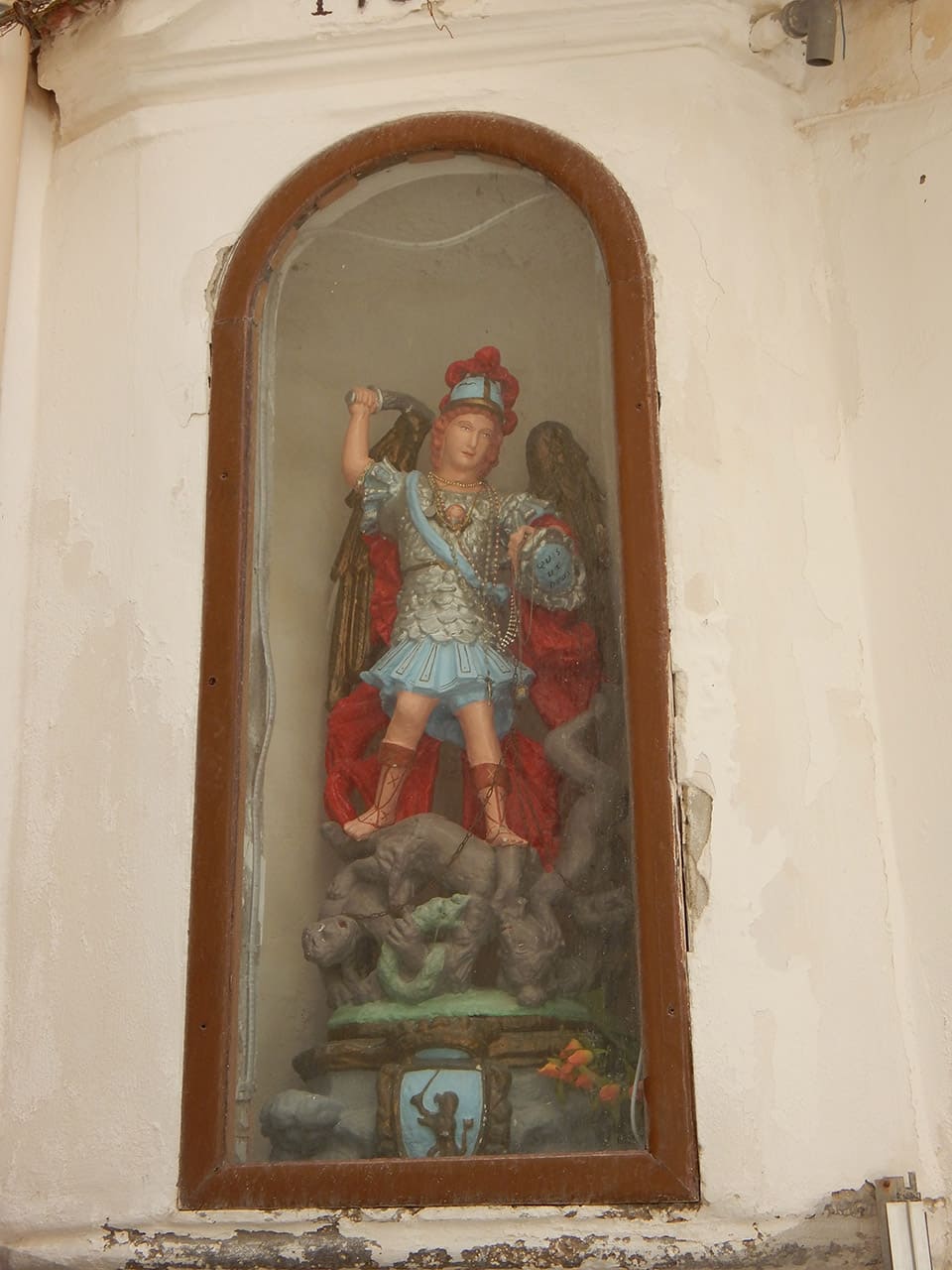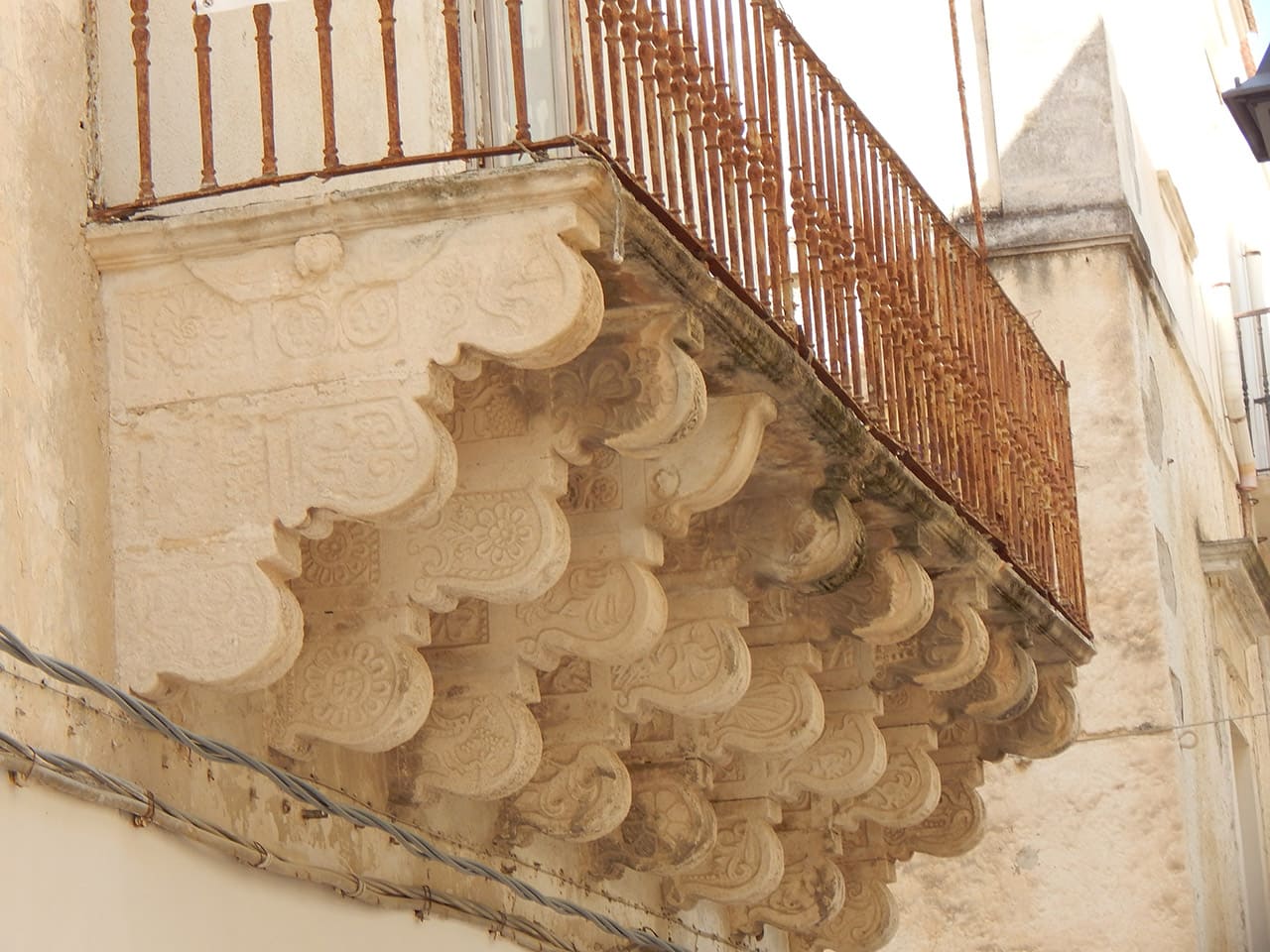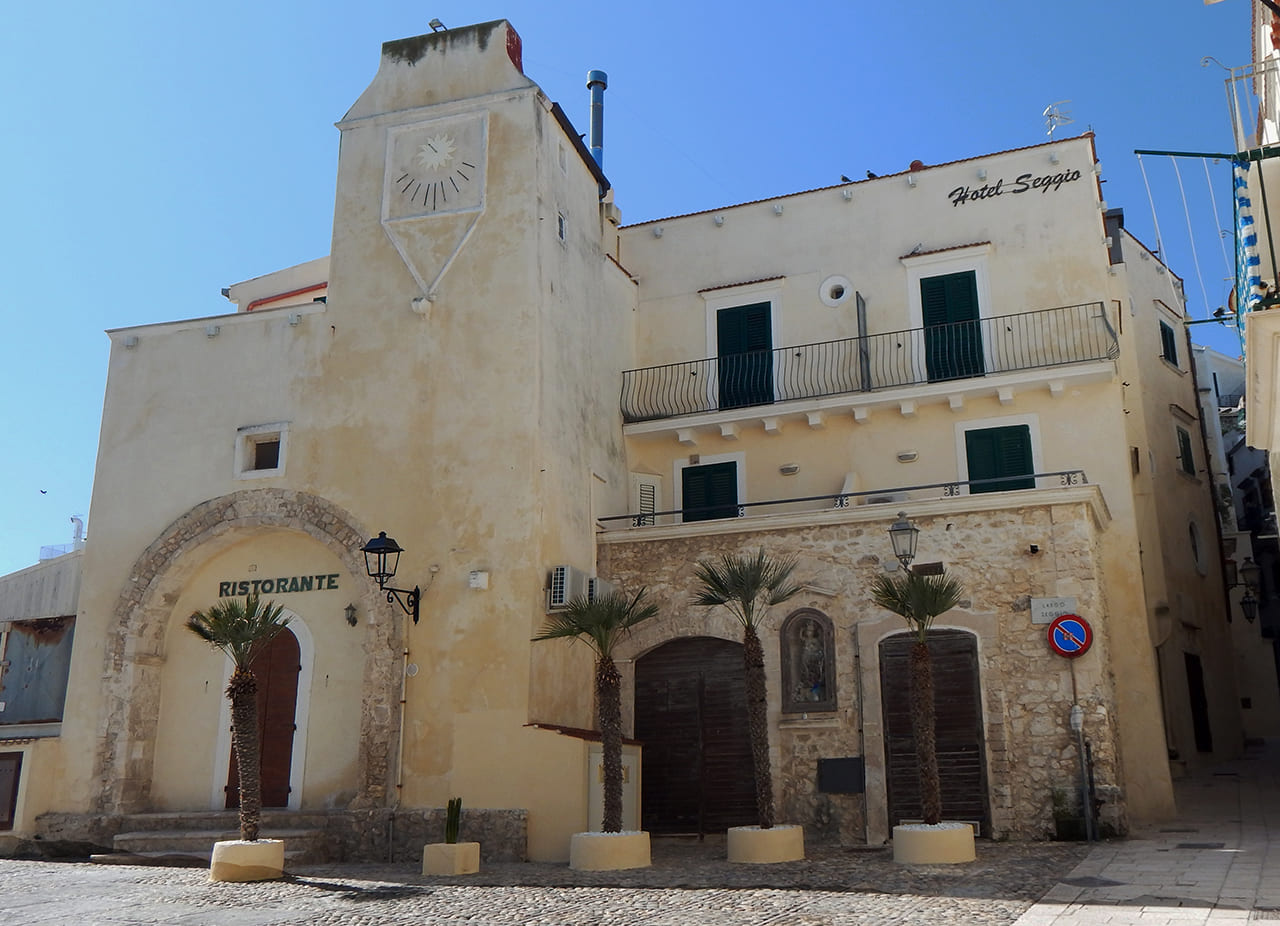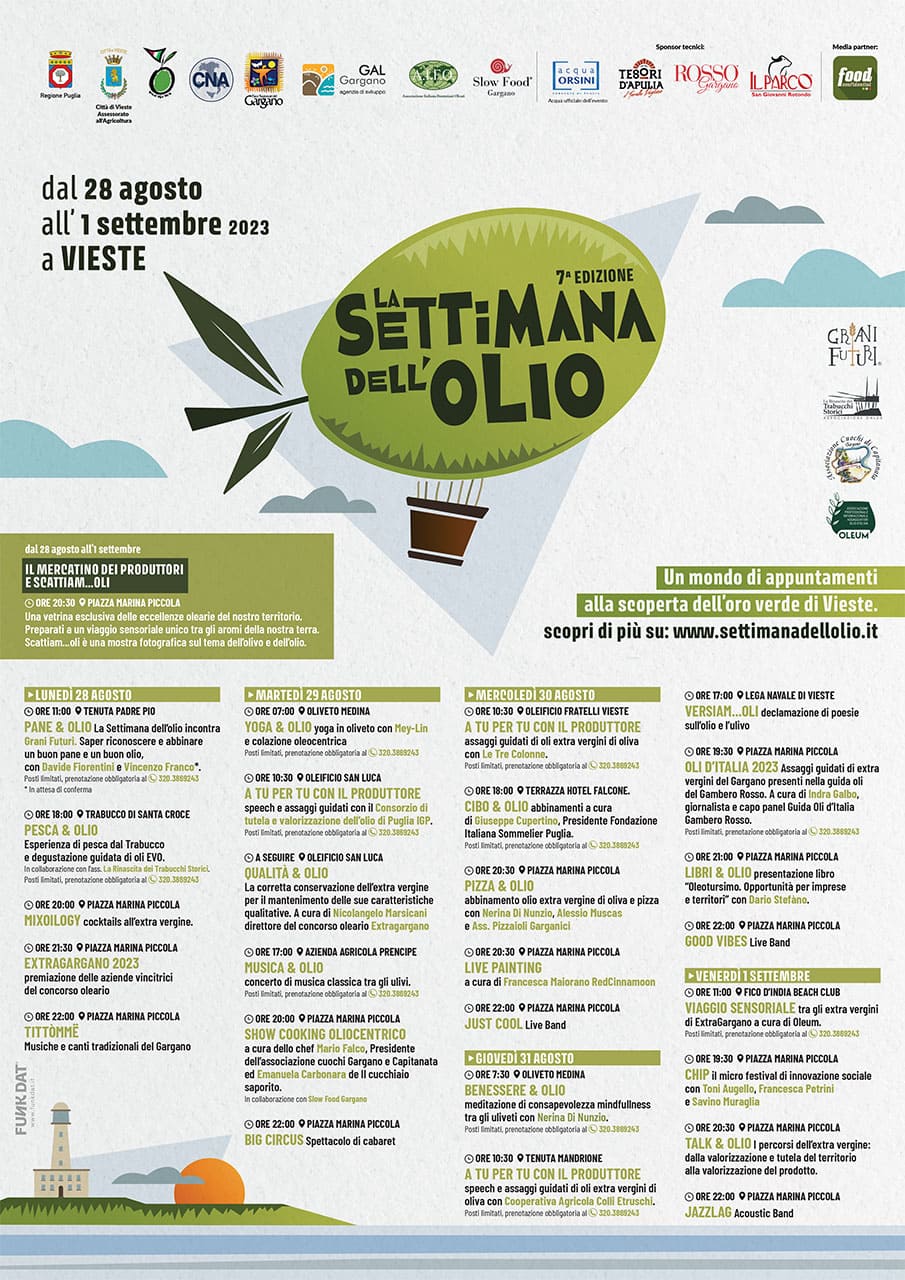Il Palazzo del Sedile o del Seggio è un edificio, diffuso in alcune città dell’Italia meridionale, in cui si svolgevano le riunioni del consiglio nobiliare per l’amministrazione cittadina. Furono istituiti nel XIII secolo dal Re Carlo D’Angiò prima a Napoli e poi in varie zone del Regno e sorgono in corrispondenza della piazza principale della città. La tipologia architettonica si ispira agli archi quadrifronti romani come l’arco di Settimio Severo a Leptis Magna o l’arco di Marco Aurelio a Tripoli, e consiste in una costruzione a due piani a pianta quadrata con passaggio a tre porte coperta, rialzata di qualche gradino a piano terra, e una stanza per le riunioni al piano di sopra.
Il Seggio di Vieste o Sedile di San Giorgio, che da anche il nome al rione più piccolo del centro storico, aveva un’apertura sulla piazza tuttora visibile, una seconda rivolta sulla strada delle Ripe caduta con il terremoto del 1948 e una terza diametralmente opposta chiusa dopo il terremoto del 1838. Successivamente si realizzò anche una cella campanaria su cui si istallò un orologio meccanico vicino all’antica meridiana. Il Consiglio del Seggio fu un vero e proprio organo rappresentativo, nel quale si riunivano i delegati dei vari rioni per assolvere le funzioni amministrative, giuridiche e giudiziarie. Erano in carica per un anno e tramite delle ordinanze stabilivano l’ammontare dei tributi, la nomina dei sindaci, l’elezione degli ufficiali incaricati delle riscossioni e il diritto di stabilire il prezzo delle derrate e del pesce. Nel 1495 re Carlo VIII emanò nuove disposizioni sui seggi con l’ingresso dei “populari” ossia di quelle famiglie arricchitesi con il commercio. Con l’abolizione dei Sedili nel 1800, tramite un decreto del re Ferdinando IV di Borbone, questi edifici persero il loro ruolo amministrativo e vennero quindi demoliti o rifunzionalizzati. A Vieste l’elezione dei membri del consiglio del Seggio avveniva ogni 2 Luglio nei locali del convento di San Francesco.
The Seggio (Seat in english) is a building, spread in some cities of southern Italy, where the meetings of the nobility council for the city administration were held. They were established in the 13th century by King Charles of Anjou first in Naples and then in various areas of the Kingdom, they are always located in the main square of the city. The architectural typology is inspired by Roman quadrifront arches such as the Arch of Septimius Severus in Leptis Magna or the Arch of Marcus Aurelius in Tripoli, and consists of a two-storey square building with a covered passage with three doors and a meeting room upstairs The Seggio of Vieste or Sedile of Saint George, which also gives its name to the smallest district of the historic Vieste, had an opening on the square still visible, a second revolt on the cliff road that collapsed with the earthquake of 1948 and a third diametrically opposite closed after the earthquake of 1838. Later, a bell tower was also built on which a mechanical clock was placed next to the ancient sundial. The Council of the Seat had a legal and jiducial functioms. They were in office for a year and by ordinances they established the amount of taxes, the appointment of mayors, the election of collection officers, and the right to determine the price of food and fish. In 1495 King Charles VIII issued new regulations on the seats with the entry of the “popular” families who had enriched themselves by commerce. With the abolition of the Seats in 1800, by decree of King Ferdinand IV of Bourbon, these buildings lost their administrative role and were then demolished or re-functionalised. In Vieste the election of the members of the council of the Seat took place every 2nd July in the convent of San Francis.


MULTIMEDIALE
Di fronte la piazza del Seggio il vicolo che unisce quest’ultima a Via Uria è l’unica strada del centro storico dedicato ad una donna. Vico Donna Veneranda si riferisce infatti alla signora Veneranda Valerio moglie del ricco possidente viestano Antonio Caizzi. La donna si guadagnò l’intitolazione di una strada grazie alla sua semplicità, alla sua bontà, al suo rispetto per la gente povera. Donna Veneranda Valerio abitò in via Uria fino alla sua morte avvenuta a 80 anni il 25 Ottobre del 1817. Accanto a questo vicolo piccolissimo vi è un palazzo, di origine medievale, con un balcone impreziosito da una bellissima serie di decori e sormontato da due rilievi che ritraggono San Michele e un leone rampante con un cartiglio. Poco distante si nota un’edicola con una statua di San Michele che segna il limite del rione di San Giorgio con quello dedicato al protettore del Gargano. Si tratta della statua che il vescovo Mastellone inaugurò nel 1656 per chiedere all’Arcangelo di preservare Vieste dalla peste. La statua era in origine collocata in una nicchia posizionata al lato opposto della strada e si affacciava sul mare, con il terremoto del 1948 che fece crollare parte della falesia, la nicchia rimase isolata per anni prima di essere trasferita all’angolo con via Mafrolla nel 1960. I Viestani ogni anno, il 28 Settembre. raggiungono a piedi Monte Sant’Angelo per festeggiare San Michele attraversando i boschi del Gargano. Questo antico pellegrinaggio, che si svolge di notte, è molto sentito dai Viestani perchè, come da tradizione, furono i primi pellegrini a raggiungere la grotta delle apparizioni.
In front of Piazza del Seggio, the alley that joins Via Uria is the only street in the historic center dedicated to a woman. Vico Donna Veneranda refers in fact to Mrs. Veneranda Valerio wife of the wealthy owner Antonio Caizzi. The woman earned the title of a street because of her simplicity, kindnessand respect for the poor. Donna Veneranda Valerio lived in Via Uria until her death occurred at the age of 80 on October 25, 1817. Next to this tiny alley there is a palace, of medieval origin, with a balcony embellished with a beautiful series of decorations and surmounted by two reliefs depicting St. Michael and a creeping Lion with a scroll. Not far away you can see a niche with a statue of Saint Michael that marks the boundary of the district of Saint George with the one dedicated to the protector of Gargano. It is the statue that Bishop Mastellone inaugurated in 1656 to ask the Archangel to protect Vieste from the plague. The statue was originally placed in a niche on the opposite side of the road and overlooked the sea. With the 1948 earthquake that caused part of the cliff to collapse, the niche remained isolated for years and then it was moved to the corner with Via Mafrolla in 1960. The people of Vieste every year, on September 28th. walk to Monte Sant’Angelo to celebrate Saint Michael crossing the woods of Gargano. This ancient pilgrimage, which takes place at night, is very important for by the people of Vieste because, according to tradition, they were the first pilgrims to reach the cave of the apparitions.
Der Seggio-Platz ist durch Vico Donna Veneranda mit der Via Uria verbunden, der einzigen Gasse, die einer Frau in der Altstadt gewidmet ist. Diese Frau war Veneranda Valerio, die Frau eines reichen Mannes, Antonio Caizzi. Sie widmeten ihr diese Gasse, weil sie eine gute, einfache Frau war, besonders mit den armen Leuten. Sie starb am 25. Oktober 1817 im Alter von 80 Jahren in der Via Uria. Neben dieser winzigen Gasse befindet sich ein mittelalterliches Gebäude mit einem Balkon, der mit einer Reihe von Dekorationen angereichert ist und von zwei Reliefs eines zügellosen Löwen mit einer Schriftrolle und St. Michael überragt wird. In der Nähe befindet sich eine Ädikula des Beschützers Saint of Gargano, Saint Michael. 1646 bat der Bischof Mastellone den Heiligen Vieste vor der Pest zu retten. Die Statue wurde 1960 dorthin verlegt, bevor sie sich in einer Parallelstraße befand, die 1948 nach einem Erdbeben einstürzte.















